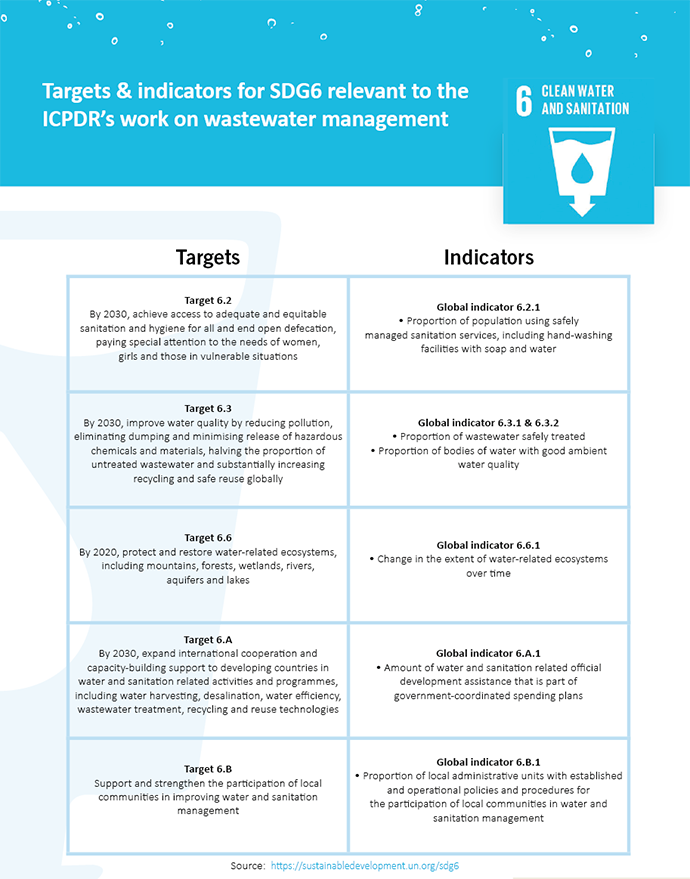Danube Watch 3/2017 - Urban Wastewater Treatment: getting the broader picture
Urban Wastewater Treatment:
getting the broader picture
Wastewater from homes, cities, industry and agriculture flowing back into the natural environment without being treated or reused is still causing significant pollution in many regions of the Danube Basin. Without proper wastewater treatment, valuable nutrients are lost and dangerous substances released into the surrounding areas. In addition to posing a significant threat to human health, the impact on water resources and ecosystems is tremendous.
Managing water in a river basin is best done with international cooperation between all the countries in the region, thereby bringing together all interests, both upstream and downstream.
One of the main functions of the ICPDR is to help to protect all waters in the Danube Basin and ensure the sustainable, long-term use of their resources. In 2016, the ICPDR published the Danube River Basin District Management Plan – Update 2015, which sets the priorities for transboundary water management in the Danube River Basin for the period 2015-2021. It also determines the actions necessary to achieve these objectives.
Almost 16 million people in the Danube River Basin are not connected to public sewers or appropriate wastewater collection systems. An additional 10 million discharge their domestic wastewater directly into surface waters, without treatment.
One of the key objectives is the reduction of emissions of organic substances, nutrients and hazardous chemicals stemming from urban wastewater treatment plants. Enhancing wastewater treatment contributes towards achieving both “good ecological status” and “good chemical status” of the surface water bodies in the Danube River Basin.
“Wastewater infrastructure and wastewater collection and treatment have improved at almost 900 agglomerations. Nevertheless, not all measures have been taken and there is still room for improvement.” ICPDR 2017 President Peter Gammeltoft.
To achieve these aims, Danube countries need to invest further in the wastewater management sector. Substantial investment in wastewater infrastructure is planned by the Danube countries to facilitate the connection of 15 million Population Equivalent (PE) to appropriate wastewater collection and treatment systems. Another 16 million households should have access to an upgraded treatment technology by 2021. The Danube countries have expressed their common interest in strengthening capacity building in the wastewater sector. Such action is necessary to better design and implement investment projects and to more efficiently operate and maintain wastewater services.
Investing in adequate infrastructure
The Danube countries have made significant progress in the area of infrastructure. Investments in urban wastewater treatment plants with minimum biological treatment technology and enhanced industrial technologies in large agglomerations (10,000 PE) have helped to reduce organic pollution significantly. Since 2005, organic emissions via wastewater have fallen by almost 50% as a result of substantial development. Investment in urban wastewater treatment infrastructure has also resulted in a remarkable decrease in nutrient emissions.
By 2021, basic infrastructural development facilities – either public sewer systems with adequate wastewater treatment or appropriate decentralised systems – will serve approximately 15 million inhabitants.
ICPDR's direct contributions to SDG 6
The Sustainable Development Goals (SDG), launched in 2015, include a target that ensures that everyone has access to safe water by 2030, making water a key issue in the fight to eradicate extreme poverty. SDG 6 covers the entire water cycle; SDG 6.3 focuses on safely treated wastewater and good ambient water quality while SDG 6.2 requires the safe disposal of all sewage. SDG 6.5 advocates integrated water resource management and transboundary water cooperation both of which are at the core of ICPDR activities.







